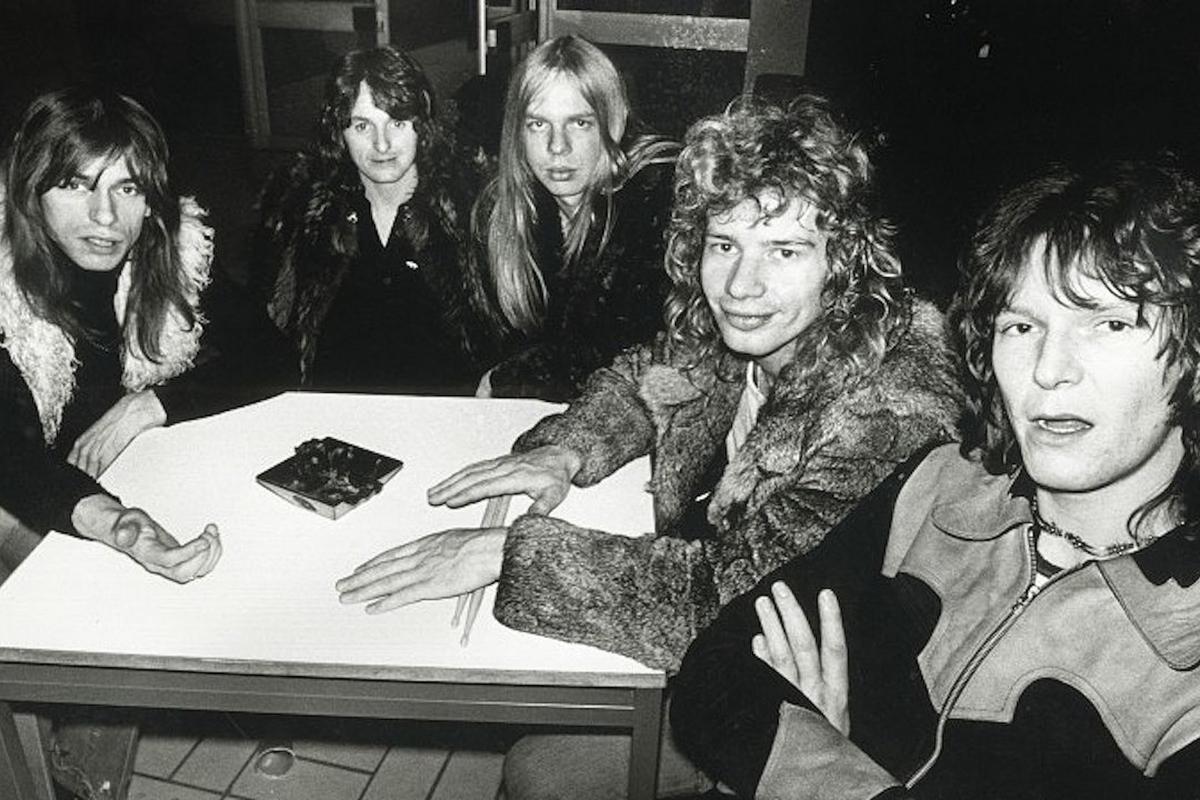Did King Crimson invent progressive rock? Were Yes and Genesis principally responsible for creating its accepted formulations – all while furiously pushing its boundaries? Did Rush’s forays into synth-driven modernity open the door for similar transformations by Yes, Genesis and a host of others?
Deciding who the “Big 4” bands of prog rock are depends on answering these kinds of deep questions.
Inevitably, of course, important acts get left out. What about the outsized musical excursions and even more outsized concert performances of Emerson Lake and Palmer? The groundbreaking folk-melded prog of Jethro Tull? Wait, is Pink Floyd actually a progressive rock band? What about Frank Zappa?
READ MORE: Top 10 Peter Gabriel Genesis Songs
Again, the questions run deep – and reasonable fans can disagree. In the end, however, settling on the Big 4 requires taking in these myriad impacts and accomplishments and then adding an overlay of popularity. You don’t reach the final four without having been a part of a lot of people’s lives.
Pink Floyd and Frank Zappa, quite frankly, were far too rangy to be considered strictly prog. Emerson Lake and Palmer and Jethro Tull may have held sway too briefly. Kansas and the Moody Blues were usually more focused on pop. Others, like Gentle Giant and Camel were sadly very niche.
So where does that leave us? Actually, back where we started. Here’s a look at the Big 4 in prog rock:
King Crimson
Rob Verhorst, Getty Images
King Crimson fired the progressive-rock shot heard ’round the world with 1969’s In the Court of the Crimson King, then made genre-refedining records in each of the three decades to follow. The faces around stalwart Robert Fripp would change, as Greg Lake, John Wetton, Bill Bruford, Adrian Belew and others cycled in and out of the band. But King Crimson somehow never lost the creative alchemy that produced triumphs like 1973’s Larks’ Tongues in Aspic, 1981’s Discipline and 1995’s Thrak. Larks’ Tongue marked a career-shifting move toward more free improvisation. Discipline added a jolt of new wave energy with a remade lineup that featured Belew and Tony Levin. Sadly, Thrak was the lone studio project from an eruptive double trio lineup that also included Trey Gunn and Pat Mastelotto.
Yes
Hulton Archive, Getty Images
Like each of the remaining members of the “Big 4” of prog rock, Yes scarcely resembled their future selves on the earliest recordings. The addition of Steve Howe and then Rick Wakeman helped transform a Jon Anderson-fronted group that sometimes dabbled in twee folk music into a dynamic long-form juggernaut on a trio of early ’70s albums highlighted by 1971’s blockbuster Fragile. By the time they returned to the Billboard Top 10 with 1983’s multiplatinum 90125, the lineup had been reconfigured around Howe replacement Trevor Rabin and Yes had completely modernized their sound. This transformation provided proof of concept that the group could survive any lineup change – even the death of cofounder Chris Squire, who’d been part of every era. They kept touring and recording, with the now-returned Howe at the helm.
Genesis
Michael Ochs Archives, Getty Images
Genesis didn’t really find their creative footing until drummer Phil Collins and guitarist Steve Hackett joined. By the time 1973’s gold-selling U.K. Top 5 smash Selling England by the Pound arrived, the Peter Gabriel-led group had completely come into its own. With subject matter and musical approaches shifting literally from song to song, Genesis was unlike anyone else. Then Gabriel left after one more LP, followed by Hackett a couple of albums later. Collins earned an in-house promotion to frontman and within a few years, Genesis had been transformed from a band that occasionally dabbled in pop (among many, many, many other things) into a pop band that occasionally dabbled in prog – but only on deep cuts. Millions bought their singles, never knowing about the occasionally twisted, yet strikingly beautiful weirdness of Genesis at their ’70s best.
Rush
Fin Costello / Redferns, Getty Images
Rush didn’t seem all that interesting at first either, as they trudged through surprisingly pedestrian songs like “Working Man.” Enter Neil Peart. His importance may not have always been self-evident on transitional early LPs like Fly by Night and Caress of Steel, but Peart unquestionably saved the band with 1976’s long-form 2112. By letting his imagination run very wild, Rush redefined themselves (and avoided getting dropped by Mercury). Hemispheres pointed the way forward in the late ’70s, including both the 18-minute Book II of their “Cygnus X-1” epic and a second side of more compact song ideas. “Tom Sawyer,” “New World Man” and “Subdivisions” then became synth-driven early-’80s U.S. hits – but by the 2000s, they were extending songs past the six-minute mark again. Rush’s last album included the even longer epic “Headlong Flight.”
Top 50 Progressive Rock Albums
From ‘The Lamb’ to ‘Octopus’ to ‘The Snow Goose’ — the best LPs that dream beyond 4/4.
Gallery Credit: Ryan Reed
How We Ranked Every Genesis Song

